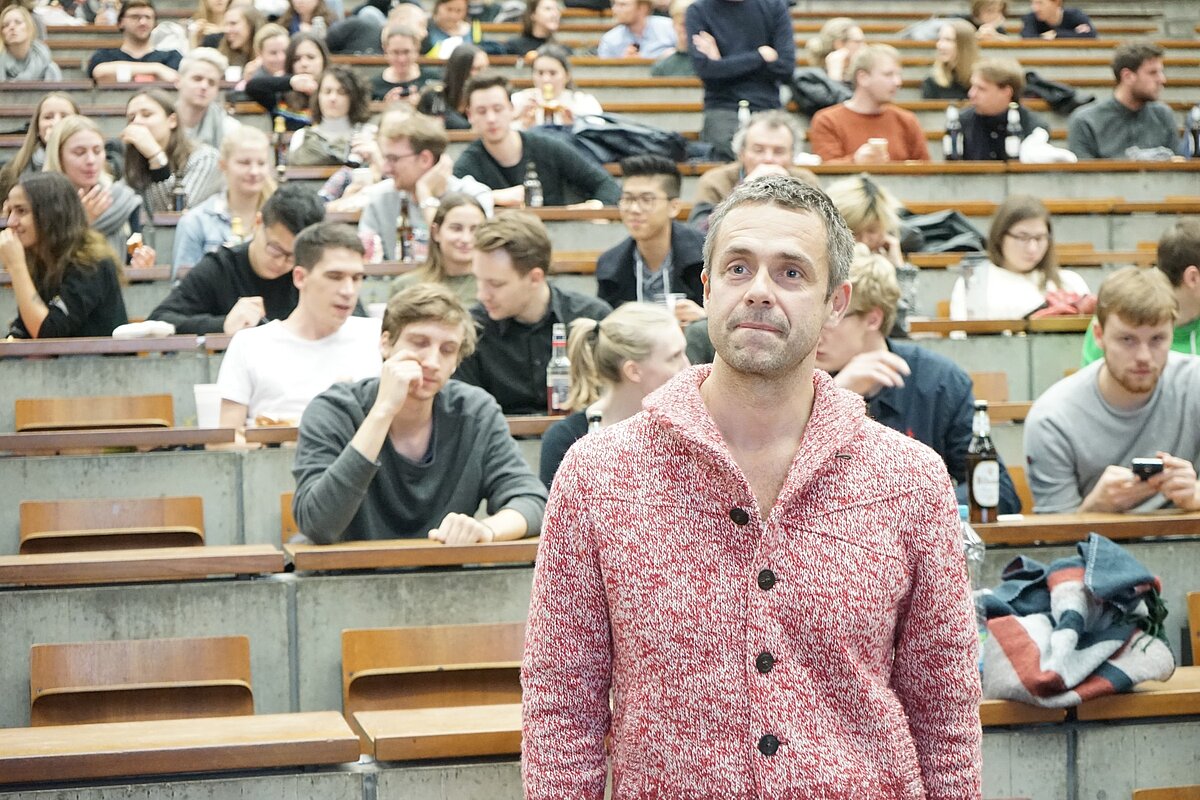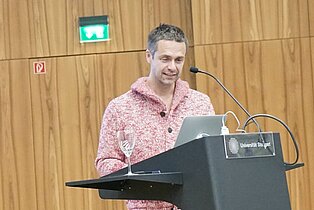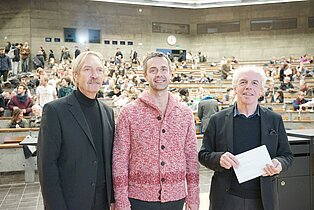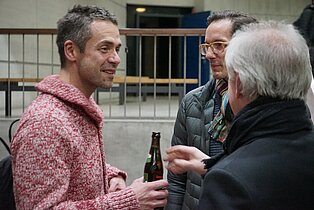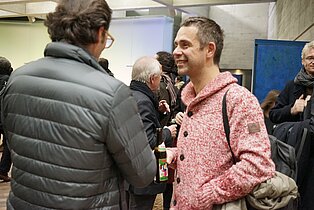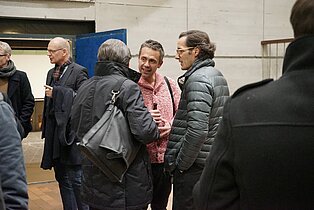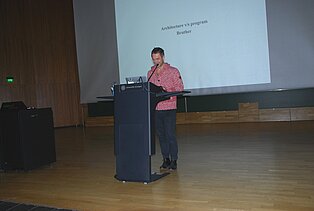Alexandre Theriot | Bruther | Paris
French architect Alexandre Theriot opened his November Talks lecture with a quote from American architecture critic Jeffrey Kipnis: "The only revolutionary programme that can be proposed today is a total lack of programme." In his lecture, Theriot sought to demonstrate why spatial arrangements and architecture often get in each other's way. The primary goal of the architecture of his office Bruther, which he runs together with Stéphanie Bru, is that it is not supposed to get in the way of life and its users – and, in order to achieve that, it appears to be necessary that spatial programs are not completely defined, which allows future design options.
Alexandre Theriot and Stéphanie Bru founded the up-and-coming Bruther firm in 2007. The portfolio of the two Parisian architects includes multiple competition victories in the cultural field and, recently, also a few direct contracts.
What does architecture mean to the final speaker of this year's November Talks in Stuttgart? First of all, Theriot does not define architecture by its function, structure or use. To him, architecture is a promise of what could be. That is why Bruther views projects as part of a dynamic process: First, there is a history, a design and its implementation and then there is the use, the conversion and the adaptation. The office wants to bear all of these phases in mind when it defines architecture. The reverse, according to Alexandre Theriot, means that Bruther only accompanies buildings for a short period of time – and then things continue without them. With the help of a few projects, the speaker explains what this means for his design practice.
Sport and cultural centre in Paris
In one of the most densely populated quarters in Paris, Saint-Blaise in the 20th arrondissement, Bruther developed a sport and cultural centre. The surrounding residential construction with typical buildings from the 1980s seals itself off in different ways – a vibrant urban life was missing. Bruther defined a space with sports areas and designed a three-storey cube with a slightly concave facade that is slanted slightly inwards. Glazing that reaches down to the ground in the bottom two storeys draws the building's surroundings into its interior. In addition to its transparent appearance, what makes the building a success is its ability to create an urban context. Not a lot is predefined in the interior. Workshops are held and different sports are offered – the floor plans are simple and easy to understand, pipes are run in the open over the exposed concrete wall and Bruther lets the users pick the furniture.
House in Bordeaux
The residential project in Bordeaux is called "Super L" and is located in a commercial area – close to multiple gigantic supermarkets that are typical for France. Over the long term, the look of the area is supposed to change – cheap living spaces are a first step. Bruther reacted with an elevated block that contains 150 nearly identical residential units. Initially, the strategy to design a residential building just like a standardised office building appears brutal. However, the very simple and minimised structure allows spacious loggias as well as unforeseen freedom with regard to expansions and future renovations.
Research centre in Caen
After having won a competition, Bruther was tasked with building a cultural and research centre for young people right next to the library from OMA in Caen. In what was an ideal circumstance, the commissioning club did not (initially) have a concrete idea which activities should take place in the building. That allowed the building to be developed in a way that left the use open. A vertical department store provided the inspiration for the design: flexible, open areas and a translucent dome on the roof as a visible landmark. The result is an elevated, four-storey building with multi-functional rooms. All floors can be reached individually and can therefore also be rented out separately – as spaces for conferences, as rooms for exhibits, fab labs with 3D printers and workshops or as meeting points for researchers working there temporarily. The facade consists of prefabricated elements: Film pillows and large glass panels are hanging from a minimised, industrial-looking steel construction.
At the end of his lecture, Alexandre Theriot stressed once more that Bruther does not believe that buildings are completed when the keys are handed over. The architects want to wait for the moment at which they had made enough decisions. "When do we need to stop in order to leave behind a building that is sufficiently changeable and adaptable?" That is the question Bruther tries to explore undogmatically. The goal of their work is to provide the building, and the process, with maximum freedom – and their work is very respectable.
Video-Interview with Alexandre Theriot
Visit our YouTube-Channel


